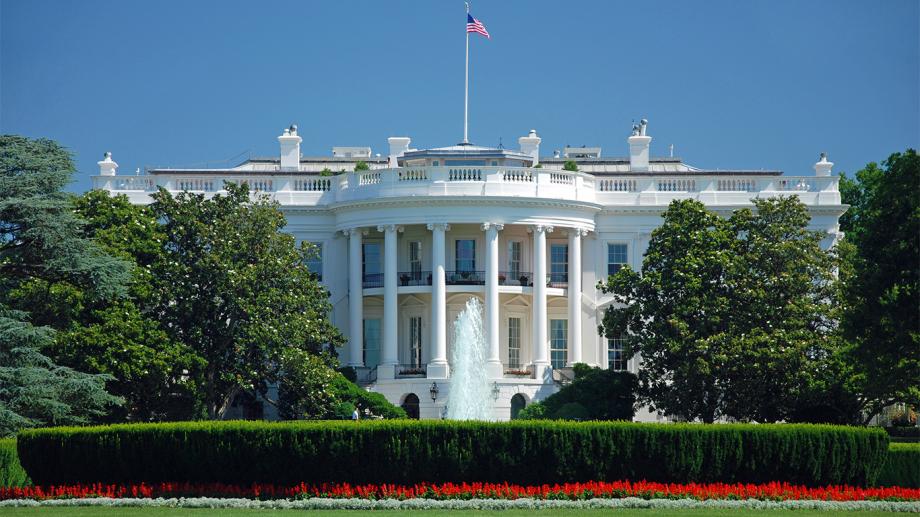Build Back Better: What Does Joe Biden’s Victory Mean for the US and the World?

Though some analysts are already calling him a “lame duck”, President-elect Biden is likely to bring forth sweeping change and could become a “Unifier-in-Chief” for both country and world. His first 100 days agenda calls for enhanced COVID-19 response and vaccine distribution plan, investments in an inclusive and sustainable recovery, the reestablishment of U.S. leadership in the world, crafting of a comprehensive immigration bill, and enactment of criminal justice reform.
After a tumultuous U.S. election campaign, Joe Biden has emerged victorious as President-elect. Political analysts, nonetheless, have been quick to throw cold water on the euphoric mood taking hold among Democrats.
Against the backdrop of a bitterly divided Congress and an economy in turmoil, Biden has rather been declared at risk, from day one, of “being a lame-duck president”, the term reserved for the typically unproductive final few months of a presidency after a successor has been elected.
Meanwhile, a litany of progressive priorities, including a green new deal, sizeable investments in healthcare and education, and an expanded Supreme Court, are being called dead on arrival as pundits predict a “dreaded two years”.
While Biden’s agenda will undoubtedly be curtailed, the prevailing view belies the range of tools at his disposal, including executive orders, and a changing political climate that will put pressure on both political parties to prove themselves good-faith partners in government.
An adept negotiator on good terms with members of both parties alike, Biden could, in fact, prove capable of brokering a compromise on a range of stalled issues from Covid-19 stimulus to comprehensive immigration reform.
Biden a skilled negotiator
Republicans are favoured to maintain control over the U.S. Senate, pending the results of uncalled races in Alaska and North Carolina and two critical January run-off elections in Georgia that will be vigorously contested. If Republicans were to hang on, it will leave a split U.S. Congress.
Memories are not short. The final two years of Obama’s presidency, also taking place under divided government, were rife with gridlock, epitomized by the U.S. Senate foregoing consideration of the nomination of Judge Merrick Garland to the Supreme Court. Meanwhile, Republican Senate Majority Leader Mitch McConnell, who has embraced the “Grim Reaper” jibe thrown his way, does not exactly appear to be clamouring to hit the reset button. Following the lead of President Trump, he has yet to reach out to Biden for a customary congratulatory call.
As Vice President, however, Biden made his mark in the Obama administration as a go-to bridge-builder between Republicans and Democrats. He counts the 2009 stimulus package and a follow-up 2012 tax relief bill as among his greatest feats.
Biden and McConnell have both expressed pride in their positive working relationship, with the Senate Majority Leader referring to Biden as an “old friend” and “trusted partner”. The partnership soured somewhat, however, towards the end of the Obama administration after one legislative item after another saw their death knell in the Senate.
While during the Democratic primaries, Biden’s bipartisan reputation earned him the ire of progressives, who felt his proliferate deal-making gave away too much to Republicans, this posture could now prove essential to securing policy achievements, as scaled down or reoriented as they might be.
Comprehensive immigration reform is one issue that could garner bipartisan support. In 2013, an immigration compromise that would have provided a path to legal status for 11.5 million undocumented immigrants and bolstered border enforcement was approved by a bipartisan coalition in the Senate including 14 Republicans. The bill, however, later stalled in the then Republican-controlled House. Democrats now hold the House but, if they are unable to flip the Senate, will need McConnell to bring the issue forward in the upper chamber, not a foregone conclusion.
Ample space for administrative decrees
Even if congressional gridlock hinders legislative action on immigration reform, the president’s prerogative to enact executive orders, federal directives that draw on the administration’s constitutional discretion to enforce law, could allow Biden to make considerable headway towards policy aims.
The Trump administration, for example, took a hostile stance towards the Obama-era Deferred Action for Childhood Arrivals (DACA) program, which, through an executive memorandum, provided legal status to undocumented immigrants who came to the United States as children. It is anticipated that President-elect Biden, meanwhile, will terminate all efforts to phase out the initiative.
Biden is also expected within the first 100 days, via executive order, to fulfill his pledges to halt construction of the US-Mexico border wall, rescind the travel ban that restricts immigration from predominantly Muslim countries, and end policies that separate migrant families at the border. He, moreover, plans to increase annual caps on refugee admissions from 15,000 to 125,000,
On climate, prospects appear dimmer for Joe Biden’s ambitious $2 trillion green economic transition plan that would bolster investments in renewable energy and put the U.S. on a path towards net zero emissions by 2050 with the aim of staving off an economically and socially calamitous global rise in temperature.
Here too executive powers, however, may be enough to hit the ground running on a significant course correction. The Environmental Protection Agency (EPA) under a Biden administration, in particular, is poised to re-enact regulations on more stringent fuel economy standards for vehicles that were loosened under the Trump administration.
The new administration is also expected to drop a dispute with California and other states that have elected to enforce environmental regulations that go beyond the national standard, emboldening subnational governments to take more vigilant action on the issue.
Yet the Supreme Court, buttressed now with a 6-3 conservative majority, will undoubtedly be tasked with ruling on the extent to which both administrative and state-level measures uphold constitutional scrutiny and will consequently play a critical role in determining the fate of Biden’s policy agenda.
In the area of foreign policy, Biden will be provided a freer hand, with time and resources likely to be expended towards re-establishing the U.S. leadership role in the world that predated Trump administration-style unilateralism. Reinvigorating the U.S. State Department, which has seen its stature diminished amid repeated threats to its budget, will be an early focal point.
For Biden, bringing back multilateralism entails recommitting the U.S. to international organizations like the World Health Organization (WHO), where it contributes 15% of the budget. President-elect Biden has, furthermore, pledged to rejoin the Paris Agreement, a move not needing congressional approval, and to re-engage the international community in upping their carbon targets and investments.
Achieving success on foreign policy will also depend, however, on rebuilding frayed relationships with allies including the European Union with which the U.S. can leverage resources to coordinate responses on Covid-19 and present a united front on endeavors to enhance global security, combat climate change, and promote human rights. Biden’s first visit to Europe, in fact, could be to Brussels, underscoring the significance of both NATO and the EU to the new administration.
An economy in distress
Biden will enter office against the backdrop of a pandemic that has left a struggling economy in its wake including a 6.9% unemployment rate. As the virus rages on, with the U.S. setting new records of cases every week, projections for an economic recovery in 2021 remain equivocal.
Negotiations continue on a possible second multi-trillion dollar stimulus package but concerns are growing about the size of the U.S. deficit, which could further balloon to 20% of GDP in 2021. Republican Senators have already balked at the proposed price tag for coronavirus relief and may put up fierce opposition to Biden’s plans for economic aid for distressed citizens, businesses, and local governments and increased investments in testing, protective gear, and contact tracing.
Even more uncertain is the fate of Biden’s long-term “Build Back Better agenda”, which is intended to marshal resources towards infrastructure, manufacturing, and the “care economy” pillars of healthcare, childcare, and education.
Pessimism is also pervasive for a political turn-around for Democrats in the 2022 midterm elections. It is almost a rule of American politics that the president’s party loses congressional seats in midterm elections, with voters tending to prefer checks and balances in government. If Democrats fail to win back the Senate this year, in other words, it’s plausible that Biden’s entire first term will be defined by gridlock.
Facing an already divided government, however, Biden is coming into office likely to face no choice but to eschew contentious policy issues that are often the mark of a president’s first term. Rather than galvanizing the public into a frenzy, the political environment will instead turn President-elect Biden to seek out compromises popular with a wide cross section of society.
Republicans are facing their own quandaries, having lost the national popular vote in seven of the last eight presidential elections. As demographics and political preferences shift, young, diverse, and/or cosmopolitan states like Georgia, Arizona, and Texas are rapidly turning away from Republicans. Virginia, Colorado, and Nevada, meanwhile, increasingly tilt Democratic. Republicans will need to moderate to remain politically competitive.
President elect-Biden, if he presses this advantage, could chart the country towards a jubilant post-pandemic era, earn himself the moniker of a “Unifier-in-Chief”, and hold off a typical midterm revolt. The 2022 Senate map, in fact, will be contested on favorable turf for Democrats and could see the Biden administration closing out the term with majorities in both chambers of Congress and able to achieve a more ambitious agenda.

Associate Fellow, Centre for Global Europe